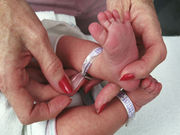Decrease in rate of teenage pregnancies, and in birth rates for women in early 20s
WEDNESDAY, Dec. 23, 2015 (HealthDay News) — The number of births in the United States increased in 2014, with an increase in the general fertility rate for the first time since 2007, according to a report published in the U.S. Centers for Disease Control and Prevention’s Dec. 23 National Vital Statistics Reports.
Brady E. Hamilton, Ph.D., from the CDC in Atlanta, and colleagues present 2014 data on U.S. births according to multiple characteristics. Data reported on the birth certificates of the 3.99 million births that occurred in 2014 were included.
The authors note that there was a 1 percent increase in the number of births registered, to 3,988,076 births in 2014. There was an increase in the general fertility rate, the first increase since 2007, up to 62.9 per 1,000 women aged 15 to 44. From 2013 to 2014 there was a 9 percent decrease in the rate of teenage pregnancies, to 24.2 per 1,000 females aged 15 to 19. For women in their early 20s, birth rates declined, while they increased for women aged 25 to 39 years. There was a slight increase in the total fertility rate, to 1,862.5 births per 1,000 women. For the sixth year there was a decrease in the birth rate for unmarried women. There was a decrease in the cesarean delivery rate, to 32.2 percent, and in the preterm birth rate, to 9.57 percent; the low birthweight rate was unchanged at 8.00 percent. The twin rate reached a new high of 33.9 per 1,000 births; decreases were seen in the triplet and higher-order multiple birth rates (down 5 percent to 113.5 per 100,000 total births).
“A total of 3,988,076 births were registered in the United States in 2014, up 1 percent from 2013,” the authors write. “The number of births rose among each of the largest race and Hispanic origin groups.”
Full Text
Copyright © 2015 HealthDay. All rights reserved.








